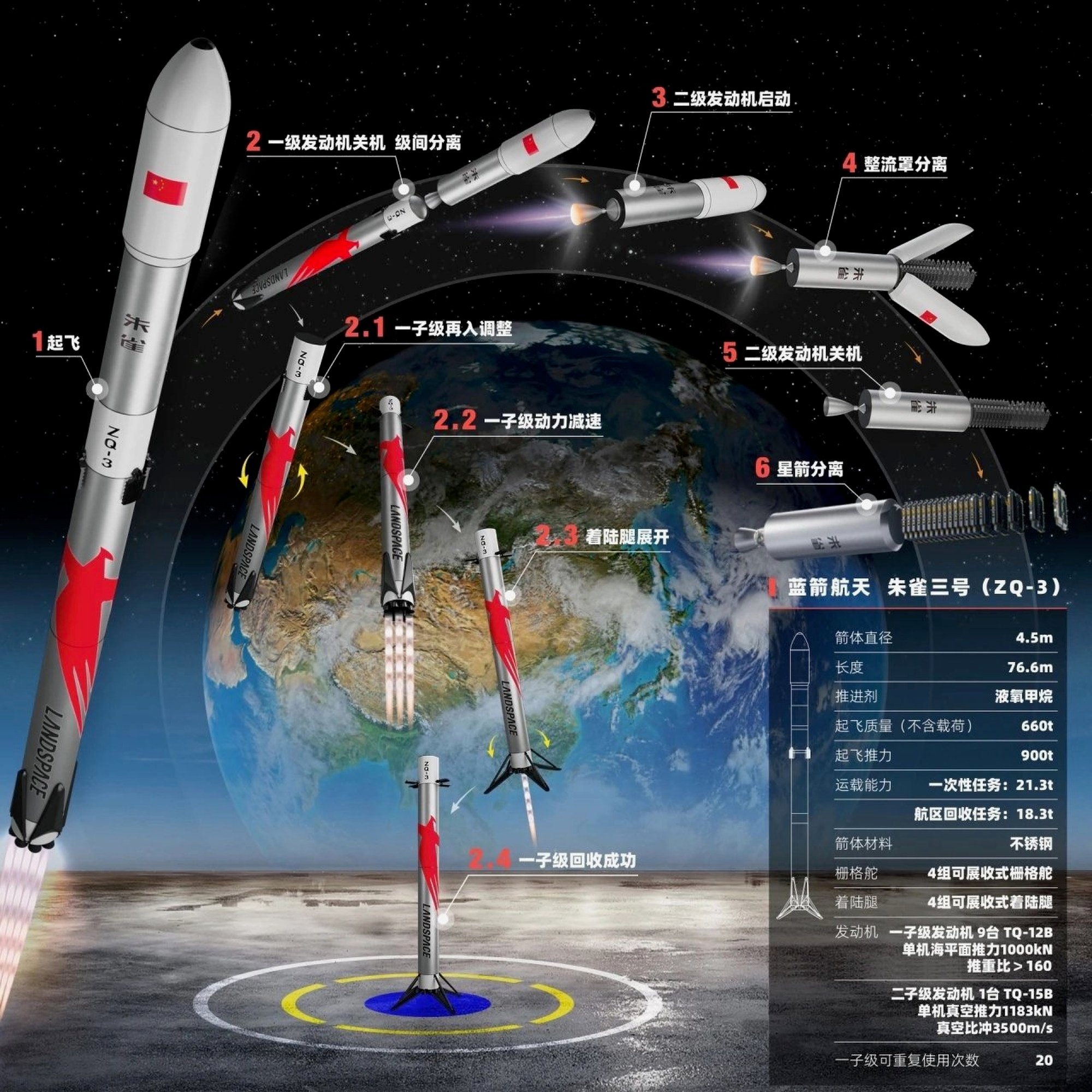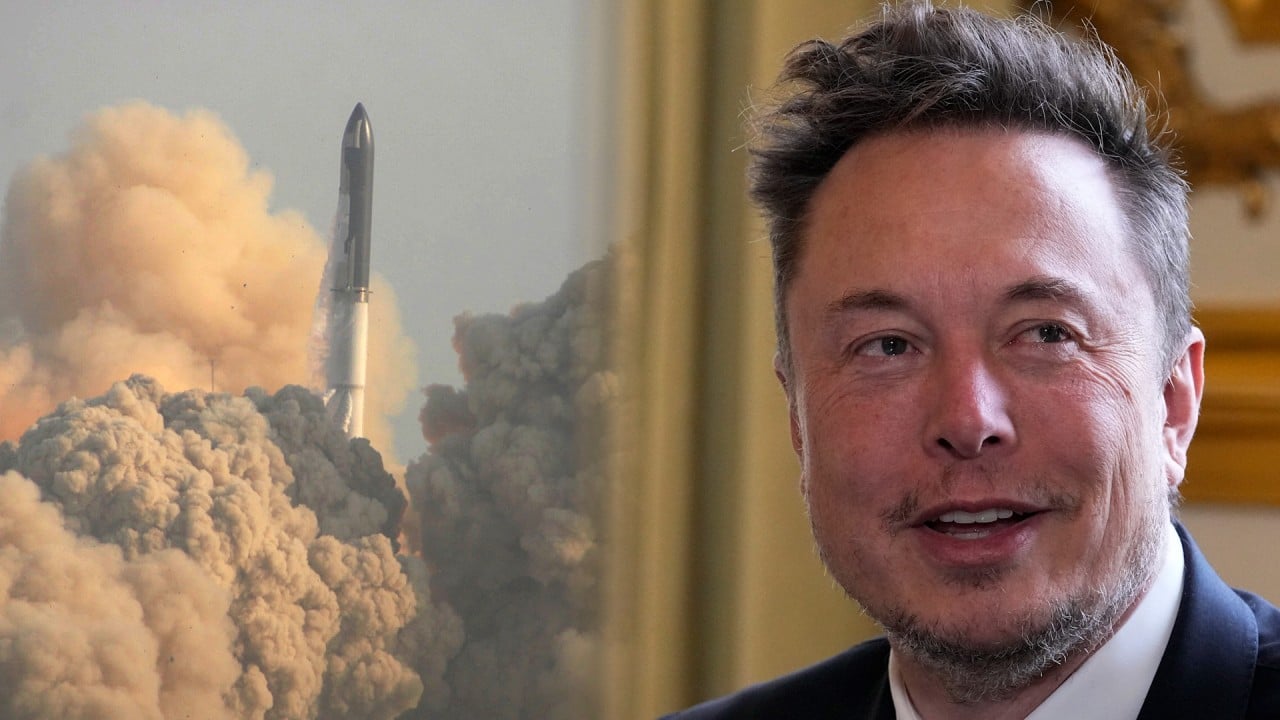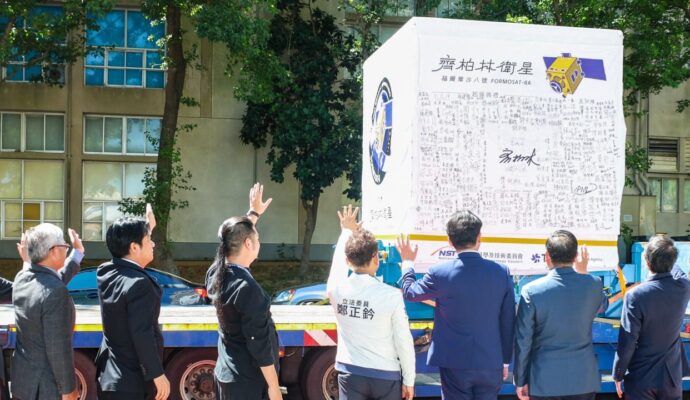It will also help usher the country’s commercial launch sector “into an era of qualitative transformation with high transport capacity, reusability and low costs”, the company said.
“Zhuque 3 appeared to be a combination of SpaceX’s Starship and Falcon 9 given its stainless steel propellant tank and nine-engine first-stage design,” a Beijing-based rocket engineer said on Monday.
However, the timeline sounded “extremely challenging”, said the engineer, who asked to remain anonymous because he was not authorised to speak to the media.
“It took SpaceX three years to develop Falcon 9 from hop tests to full rocket launches. My guess is it might take Chinese companies slightly longer,” he said.
LandSpace is targeting a hop test later this month, during which a stainless steel prototype of Zhuque 3’s first stage would lift off to a height of about 100 metres and land back on Earth in a controlled manner, according to company CEO Zhang Changwu.

“Then next year, we’ll focus on the manufacture and flight verifications of Zhuque 3’s major components and get ready for a full rocket assembly and flight in 2025,” Zhang told China News Service on Saturday.
He said Zhuque 3 would be equipped with Tianque engines that “have been proven to work” during the two successful launches of Zhuque 2, LandSpace’s smaller methalox rocket, in July and this month.
According to the company website, Zhuque 3’s first stage will use nine Tianque-12B engines, and its second stage will have one Tianque-15B vacuum engine. The first stage also contains grid fins and deployable landing legs.
From outer space to seven seas, China’s 6 big economic priorities for 2024
From outer space to seven seas, China’s 6 big economic priorities for 2024
It will be able to lift payloads up to 21.3 tonnes to low-Earth orbit when expendable, or 18.3 tonnes when the first stage is recovered down range, or 12.5 tonnes when the first stage returns to the launch site, according to the company.
It said Zhuque 3 would also be China’s first stainless steel rocket, to take advantage of the material’s high strength, high temperature resistance, corrosion resistance and low cost.
Methane is cheaper and more efficient than kerosene when it comes to reusable rockets.
Methane has a heat of combustion 13 per cent higher than that of kerosene, according to a Nasa study from the early 1970s. Methane also burns clean, while kerosene leaves substances that can remain in the engine and nozzle to create problems for reuse.
LandSpace has had three flight attempts with its methane-fuelled Zhuque 2 rocket, with the first ending in failure in December last year. The second, which took place in July, was successful but did not carry a payload.
Taiwan warned PLA is watching after Beijing sends up more satellites
Taiwan warned PLA is watching after Beijing sends up more satellites
“At the end of the day, we are a commercial launch company and we need to make profits,” Huang told China News Service.
“It will take a long time to complete this technical and financial ‘loop’, but only when we are truly profitable can we establish our business model.”
In November, SpaceX declared its Starlink satellite-based internet service had reached 2 million active users and achieved profitability.



